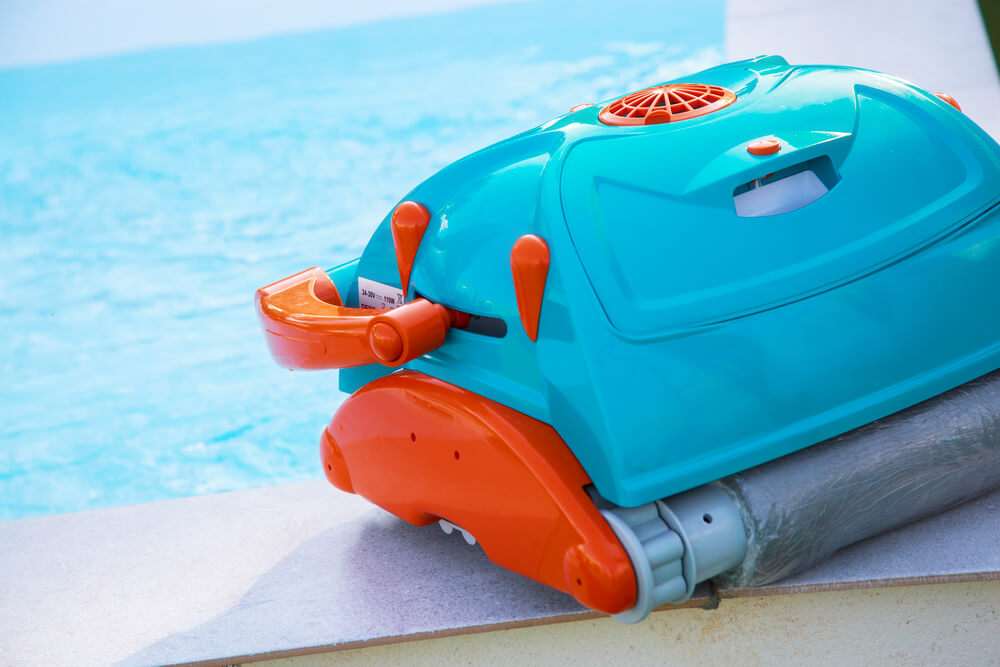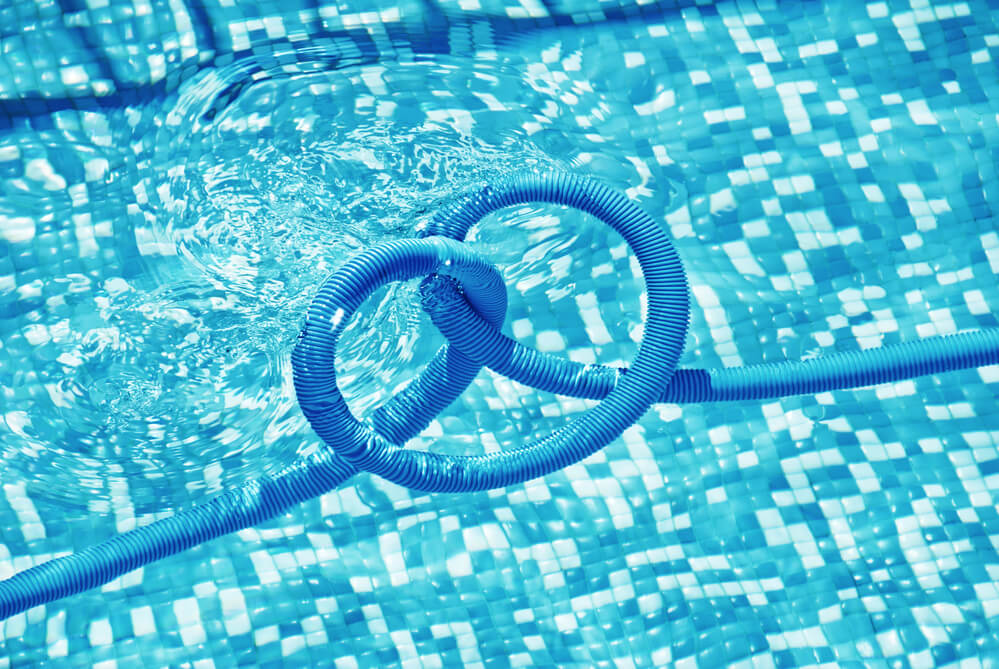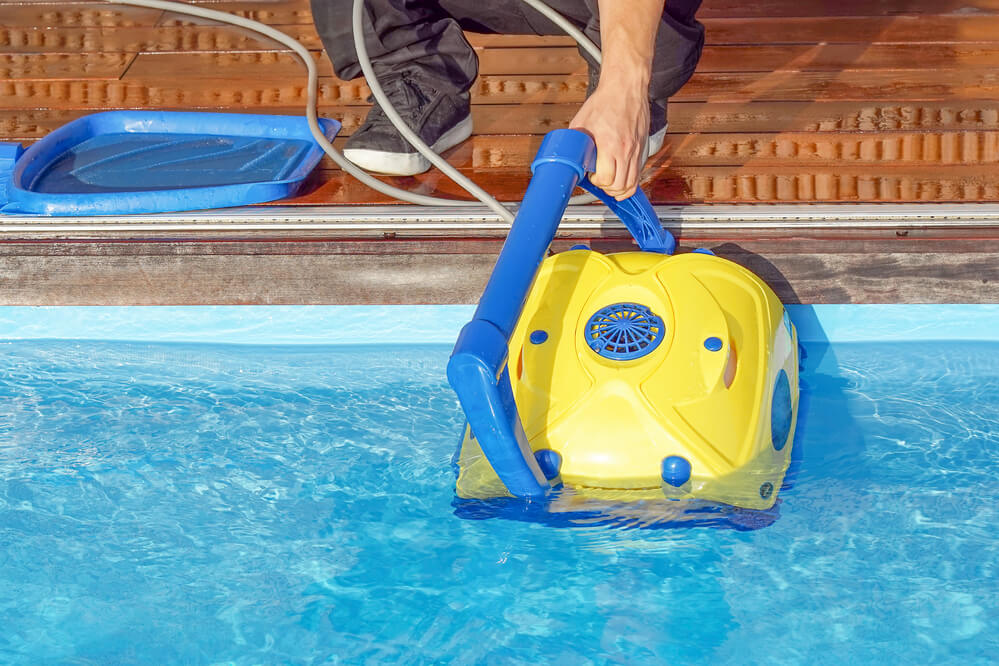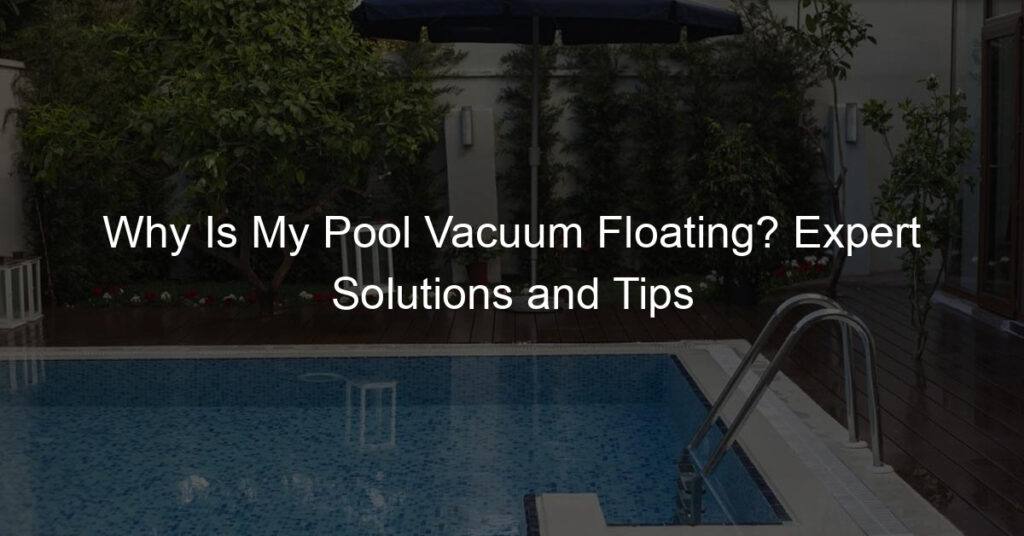Pool vacuums are essential for maintaining a clean and inviting swimming environment. However, when you notice your pool vacuum floating, instead of effectively cleaning your pool, you’ll want an answer to resolve the question why is my pool vacuum floating?
In most cases, floating pool vacuums are caused by air trapped in the hose or unit, improper hose positioning, or a damaged or worn component that needs to be replaced.
Understanding the dynamics of your pool vacuum will help pinpoint the cause of the floating problem. By carefully inspecting the hose and vacuum components, as well as the connections between the parts, you can effectively troubleshoot the issue.
Further, ensuring that your vacuum operates correctly will save you time and effort in the long run, leaving you with a sparkling pool to enjoy.
Key Takeaways
- Air trapped in the hose or unit and damaged components are common causes of floating pool vacuums.
- Inspecting and correctly positioning the hose and vacuum components can help troubleshoot floating problems.
- Regular maintenance and proper operation prevent your pool vacuum from floating and enhance its effectiveness.
Understanding Pool Vacuum Dynamics

Principle of Operation
Pool vacuums work on the principle of suction, using the force created by your pool’s circulation system to remove dirt, debris, and dust from the bottom of your pool.
When operating correctly, the pool vacuum should attach itself to the tiles and remain there, ensuring a thorough cleaning.
Ensuring that the hose doesn’t have any air in it is vital, as air in the hose can cause the vacuum to float instead of staying in contact with the pool floor.
Common Design Features
Most pool vacuums share key design features that ensure optimal performance:
- Hose lengths: The hose should be long enough to reach every area of your pool but not excessively long to avoid tangling.
- Couplings: Couplings secure the vacuum hose sections together, maintaining a tight seal to prevent air from entering the hose. Loose couplings can lead to air entering the system and causing the pool vacuum to float.
- O-rings: These small, circular seals are used to ensure the hose sections are properly connected and maintain suction. Worn O-rings can allow air to leak into the hose, resulting in the vacuum floating.
To ensure efficient pool vacuum operation, check for loose couplings, cracks in the hose, or worn O-rings. If any of these issues are present, addressing them will help resolve the floating problem, ensuring proper contact with the pool floor and more effective cleaning.
Why Is My Pool Vacuum Floating?

Improper Weight Distribution
One potential cause of your pool vacuum floating is improper weight distribution. If the vacuum’s components are not balanced correctly, it may not sink to the bottom of the pool as intended.
To resolve this issue, you should consult your pool vacuum’s user manual to ensure that all components, such as the head float and thrust jet, are set up correctly.
Adjustments to these parts may be necessary to achieve the proper weight distribution.
Air Trapped in the System
Another common cause of a floating pool vacuum is air trapped in the hose or other parts of the system. This issue can be due to a loose coupling, a hose crack, or a worn O-ring.
To fix this problem, remove the pool vacuum from the water and inspect the hose for cracks and leaks. Make sure that the couplings are snug and secure.
If necessary, replace any leaky hose sections to eliminate air buildup in the system.
Incorrect Hose Length
Using an incorrect hose length can also lead to your pool vacuum floating. If the hose is too long or too short, it may prevent the vacuum from reaching the bottom of the pool, resulting in it floating.
To address this issue, first, consult your vacuum’s user manual to determine the proper hose length for your specific pool size.
You may need to purchase additional hose sections or remove existing sections to achieve the correct length.
Once the hose length is adjusted, the vacuum should function without floating.
Preventing Your Pool Vacuum From Floating

Ensuring Proper Installation
To prevent your pool vacuum from floating, it is crucial to ensure proper installation. Start by following the manufacturer’s guidelines included with your pool cleaner.
Make sure that the vacuum hose is free of air, as air in the hose can cause the cleaner to float. To do this, you can submerge the hose and fill it with water before connecting it to the vacuum.
Another important aspect is to check for loose couplings, hose cracks, or worn O-rings, as these can also be responsible for floating issues source.
Replace any leaky or damaged hose sections and ensure that all connections are secure and snug.
Regular Maintenance Tips
To keep your pool vacuum operating at peak efficiency, it’s essential to perform regular maintenance.
Here are some tips to help you maintain your pool vacuum:
- Inspect the hose and connections: Regularly check the hose for cracks or leaks and ensure that all connections are tight and secure. Replace any damaged or worn parts as needed.
- Clean the filter baskets: Routinely empty and clean both your pool’s skimmer and pump filter baskets. A clogged filter basket can reduce water flow and affect the cleaner’s performance.
- Monitor the water flow: Make sure there is adequate water flow by using a vacuum gauge or flow meter. Your cleaner’s manual should provide guidelines for the optimal water flow levels source.
- Check the cleaner’s RPM: The number of revolutions per minute (RPM) for pressure-side pool cleaners should be within the recommended range. Consult your owner’s manual for instructions on how to adjust the RPM, if necessary source.
Following these essential installation and maintenance tips, can minimize the risk of your pool vacuum floating and ensure you optimal cleaning performance.
Role of Pool Vacuum Accessories

Importance of Weights
Having the right weights on your pool vacuum is crucial for its performance. Weights help maintain proper contact between the vacuum head and the pool surface, ensuring efficient debris removal.
When the vacuum head is too light, it may float rather than stay on the pool floor, making it harder to clean the pool properly.
To resolve this issue, you can try adjusting the existing weights or adding additional weights to the vacuum head.
Make sure to follow the manufacturer’s guidelines when doing so.
Effect of Hose Extension
The length of your pool vacuum hose plays a significant role in the vacuum’s overall performance. A short hose may prevent the vacuum from reaching certain areas of your pool, while a too-long hose can lead to tangles and reduced efficiency.
As a general rule, ensure that your hose extends two full sections past the furthest point in the pool. If you find that your hose is affecting the vacuum’s movement, you can either trim the hose or invest in a hose extension to achieve the optimal length.
Remember to follow the manufacturer’s recommendations for hose lengths and extensions to avoid any potential issues.
Professional Help For Pool Vacuum Issues

If you’re still experiencing pool vacuum floating issues after trying common troubleshooting steps, it may be wise to consult a professional for expert guidance.
Pool equipment technicians have extensive knowledge about various pool vacuum models and can identify problems quickly and efficiently.
When reaching out to a professional, be prepared to provide as much information as possible about your pool vacuum, including its make and model and a description of the issues you’re facing.
This will help the technician diagnose the problem and suggest the most appropriate course of action.
Often, they can determine if the issue can be fixed on your own or if it’s necessary to schedule a service appointment.
It’s important to keep in mind that regular maintenance and timely repairs are essential to prolonging the lifespan of your pool vacuum and maintaining optimal performance.
By addressing problems promptly and seeking professional assistance when necessary, you can ensure that your pool stays clean and your vacuum operates efficiently for years to come.
Frequently Asked Questions
Why is my pool cleaner not staying flat?
Your pool cleaner might not be staying flat due to an imbalance in its parts or incorrect hose weight placement.
Check the hose connections and ensure the weights are positioned according to the manufacturer’s guidelines.
Make sure there are no obstructions or debris caught in the cleaner.
Why does my Polaris 280 keep floating?
A floating Polaris 280 could be a result of air in the hose, a cracked hose, or a worn O-ring. Inspect the hose for cracks or leaks, and check the couplings for tightness.
Replace any leaky sections or worn O-rings. If the problem persists, consider adjusting the thrust jet angle for better balance.
How can I adjust the head float of my Polaris 360?
To adjust the head float of your Polaris 360, first, turn off the pool pump. Then, remove the cleaner from the pool and locate the head float near the top of the device.
Adjust by sliding it up or down to achieve the desired buoyancy. Reinstall the pool cleaner and observe its performance to ensure the adjustment has solved the issue.
Why does my Dolphin pool cleaner keep rising?
If your Dolphin pool cleaner is rising, it could be due to inadequate suction, a dirty filter, or air in the system. Make sure the filter is clean, and the pump is functioning properly.
Check for air leaks in the hoses and connections to resolve any air-related issues.
If necessary, contact the manufacturer or a pool maintenance professional for further assistance.
How can I ensure my pool vacuum covers the entire pool?
To make sure your pool vacuum covers the entire pool, adjust its hose length, and check that the hose is not tangled or kinked.
Ensure that the pool cleaner is properly balanced and not favoring a certain area of the pool.
Also, verify that the pool cleaner’s wheels or tracks are in good condition and not slipping or dragging.
Why isn’t my pool vacuum hose staying submerged?
A pool vacuum hose that isn’t staying submerged could be due to air trapped inside the hose or an incorrect weight setup.
To expel any air, submerge the hose, and fill it with water before attaching it to the pool cleaner.
Check that the hose weights are correctly positioned, and consider adding extra weights if necessary. ParameterDirection














